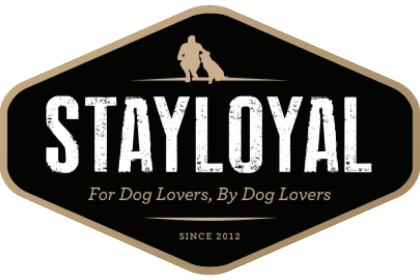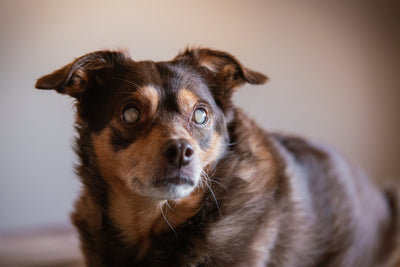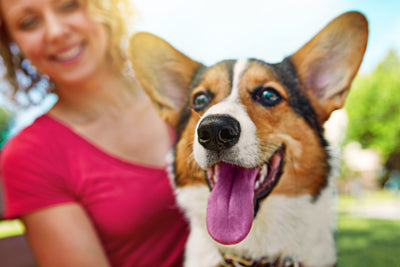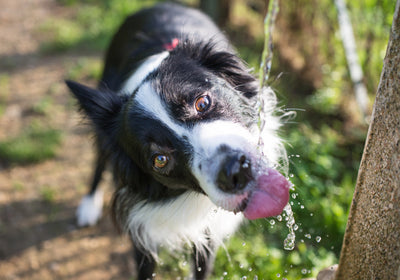Why Do Dogs Like to be Petted?
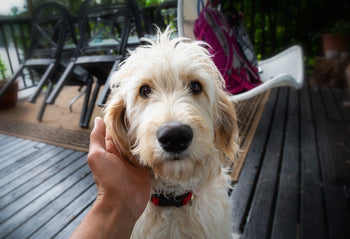
While there are exceptions to the rule, most dogs solicit petting. But why? Other dogs do not use their paws to “pet” each other. And while cats may mutually groom each other, dogs really don’t do that either, with the exception of mothers licking their pups. So why do dogs seem to crave our touch?
There is not a solid answer for this question. Most likely, it developed over the centuries of interactions with humans. Just like a clicker is conditioned to mean “you did something right, food is coming,” the touch of a human petting them became associated with positives things (for example many of us pet our dogs when they do something good and then they get a food reward as well.)
This train of thought makes sense when you think of dogs that have not been treated well. They do not naturally see human touch as something good. If human hands have harmed them, they are going to shrink away from them. And, feral pups, that have not had human touch, are natural wary to it as well. In both cases, rescue groups use counterconditioning to teach the dogs to enjoy human touch. They do this by pairing touch with a reward the dog likes, usually food.
Of course, even a dog that enjoys being petted may have parts of his body he prefers you touch versus others. Most dogs are not keen on people, especially strangers, coming up and reaching their hand over their face. Again, this shows that instinctually, most dogs are actually a bit wary of human touch. But scratch them by the ear or at the base of the tail and you have a happy dog. More confident dogs may even roll over and expose their vulnerable belly for a rub, and they are usually the type that do not mind being petted even on the head. They are good-natured, well socialised and do not see humans as any type of threat – only good things come from those hands!
Gregory Bern, a neuroscientist at Emory University, trained a number of dogs to go into an MRI machine, sit and stay, so that he could map their brain’s response to stimuli. He tried to answer the question “do our dogs really love us,” by seeing if a dog’s brain responded more to seeing their owner who was praising them, versus a food reward. He found that most dogs had an equal response in the brain to praise and food. There were a handful that preferred praise and a handful that only cared about the food. He did not experiment with physical touch, probably due to the limits of the MRI machine. However, because the area of the brain that “lit up” when the dog saw its owner was the caudate nucleus – the area of the brain that has the largest amount of dopamine receptors, Bern believes that this shows that the dog anticipates good things happening when she interacts with her owner, and this could include petting.
It's important to note that they noticed a difference in most dog’s brain activity when they were shown a “friendly stranger” versus their owner. The reaction in the brain was much less with someone unfamiliar, which supports the idea that human interaction – like petting – is a learned behaviour based on a positive and nurturing environment.
This type of information is very useful, especially for those thinking of adopting a rescue dog. Knowing their brain may see humans as a threat or at least, not as something that brings positives feelings (dopamine) to the body, can help adopters know the best way to work on creating those positive feelings in the brain (through counter-conditioning, for example) so the dog becomes more relaxed with human interaction and eventually touch.
The most important thing is to be aware of how your dog reacts to petting. Does he move in closer or shy away? Maybe he likes being pet for a few seconds but then leaves. To develop a better relationship, it’s important to respect your dog’s wishes in terms of petting (forcing them to stay and be petted will have the opposite affect!). And if you have a dog that is more shy, spend some time pairing petting with something you know your dog really likes – a good treat, a favourite toy, etc. This way, you can both get the attention you want and you will live a happier, more symbiotic relationship.
